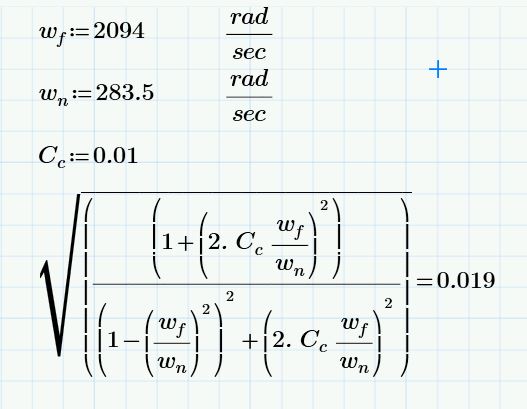I have made a "test" model where there is only a vertical pipe anchored in the bottom. the pipe column is properly "meshed" (it is a 10inch pipe and every 2m there is a node break)
In the dynamic input, I applied 15000N in one direction horizontally at the free end of the pipe with the time duration of 1ms only (1ms rise time, 1ms duration in the peak and 1ms drop time)
in the dynamic output, I see that the reaction force on the anchor is 5123N which if I divide it by the 15000 (original force) it will give me a DLF of 0.3415.
this is the part that baffles me; reading from CII output, wn (the radial frequency in which the system gets the highest contribution from the force) is 283.5 rad/sec. from the spectrum that I made; radial frequency would be 2094 rad/sec. if I input these values into the DLF calculator formula as per the attachment, the DLF would be 0.019! this means the reaction force shall be only 0.019x15000=285N
I wonder if anyone could explain this difference.
Attachments
